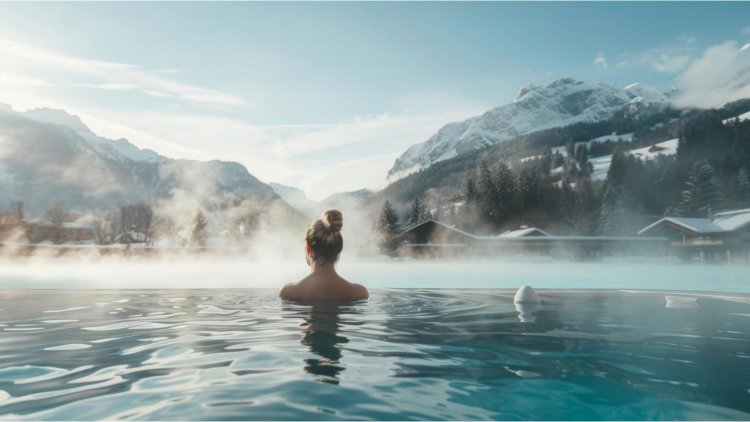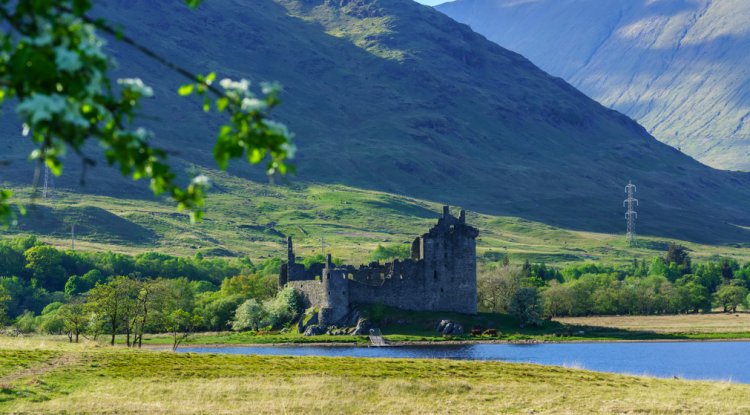Soaking in Serenity: 10 Essential Tips for Hot Springs and Thermal Bath Adventures
Soaking in hot springs and thermal baths is a timeless way to relax, rejuvenate, and connect with nature. This article offers ten essential tips to elevate your experience, from selecting a destination that matches your preferences to preparing for unique etiquette practices around the world. Learn about the health benefits and risks, packing must-haves, and strategies to make the most of your soak. With insights on popular locations, timing, cultural respect, and budgeting, these guidelines are designed to help you embark on a memorable, tranquil adventure in the world’s most picturesque hot springs and thermal spas.

1. Choose the Right Destination for Your Ideal Soak
Hot springs and thermal baths vary greatly depending on their location, mineral content, and the ambiance they offer. When selecting a destination, consider what type of experience you're looking for. Are you after a luxurious resort experience or a more natural, rugged setting? Destinations like Japan's Hakone, Iceland's Blue Lagoon, and the mineral-rich spas of Hungary each offer unique experiences.
In Japan, traditional onsen baths are often set in picturesque, mountainous locations with a focus on natural beauty and tranquility. The mineral content of the water, which can include sulfur, calcium, and magnesium, offers various health benefits and can vary from one onsen to another.
In contrast, Iceland's Blue Lagoon combines geothermal waters with modern spa facilities, providing a more luxurious experience with amenities such as in-water massages and a swim-up bar. The milky blue waters are rich in silica, which is renowned for its skin benefits.
Hungary, known for its rich thermal bath culture, offers an array of historical and modern baths, including the famous Széchenyi Thermal Bath in Budapest. These baths often feature grand architecture and multiple thermal pools with varying temperatures and mineral compositions.
Research each destination's water quality, temperature, and surrounding attractions to ensure it matches your preferences.
2. Timing is Everything: Optimal Visit Hours and Seasons
When visiting hot springs and thermal baths, timing can greatly impact your experience. To avoid crowds and enjoy a more serene atmosphere, consider visiting during off-peak hours and seasons.
For many hot springs, early morning or late afternoon visits tend to be less crowded. Weekdays are often quieter than weekends, especially in popular tourist destinations. Additionally, consider traveling during shoulder seasons—periods just before or after peak tourist seasons. For example, visiting Iceland’s Blue Lagoon in late fall or early spring might offer a more peaceful experience compared to the busy summer months.
If you're aiming for a more social experience, visit during peak times when you can enjoy vibrant atmospheres and perhaps meet fellow travelers. Conversely, if tranquility is your goal, aim for quieter periods and consider staying in less touristy areas.
3. Prepare for Different Etiquette Practices
Each hot spring and thermal bath location may have its own set of etiquette rules, so it’s crucial to familiarize yourself with these before your visit. In many Japanese onsens, for example, bathing is done in the nude, and it is important to thoroughly clean yourself at the provided washing stations before entering the communal baths. Swimwear is generally not allowed in these baths.
In contrast, many European and American thermal baths do allow swimwear, and you may find that the etiquette around entry and use is more relaxed. However, even in places where swimwear is permitted, it’s important to respect the cleanliness and rules of the facility, such as showering before entering the pools and avoiding loud behavior.
Research the specific customs of the location you are visiting to ensure a respectful and enjoyable experience for yourself and others.
4. Stay Hydrated and Be Mindful of Temperature
Hot springs and thermal baths can be incredibly relaxing, but they can also lead to dehydration if you're not careful. Always drink plenty of water before and after your soak. Most thermal baths recommend limiting your time in the hot water to avoid overheating.
Typically, a session in a hot spring should last between 15 to 30 minutes, depending on the water temperature and your personal tolerance. After soaking, take breaks to cool down and hydrate. Some facilities provide rest areas with refreshments, but it's always a good idea to carry your own water bottle.
If you have any health conditions or concerns, consult with a healthcare professional before visiting thermal baths, especially if you have cardiovascular issues or are pregnant.
5. What to Wear and Bring Along
While some hot springs and thermal baths provide amenities like towels, robes, and lockers, others may require you to bring your own. It's best to check the facility's website or contact them directly to understand what is provided and what you should bring.
Typically, you should pack:
- Swimwear (if required): Ensure it is clean and appropriate for the facility's rules.
- Towel: Some places offer towels, but it’s often a good idea to bring your own.
- Flip-flops or Water Shoes: Useful for walking around wet areas.
- Personal Toiletries: Such as shampoo, conditioner, and body wash if the facility doesn’t provide them.
- Water Bottle: To stay hydrated.
In addition to these essentials, consider packing a hat and sunscreen if you plan to be outdoors, especially if you are visiting a hot spring located in a sunny region.
6. Understand the Health Benefits and Risks
Hot springs and thermal baths are celebrated for their therapeutic benefits. The minerals in the water can help with relaxation, pain relief, and skin conditions. For instance, sulfur is known for its ability to improve skin health, while magnesium can help with muscle relaxation.
However, it’s also important to be aware of potential risks. Long periods in hot water can lead to overheating, dizziness, or dehydration. Individuals with certain health conditions, such as heart disease or high blood pressure, should exercise caution and consult with their healthcare provider before using thermal baths.
Moreover, ensure the facility maintains high hygiene standards to avoid infections or other health issues. Cleanliness is paramount, especially in public pools, so choose facilities with good reviews and reputation.
7. Embrace Local Culture and Traditions
Incorporating local culture into your hot springs experience can enhance your visit. For instance, in Japan, taking part in traditional bathing rituals and understanding their cultural significance can provide a deeper appreciation of the experience. This might include learning about the historical and spiritual aspects of onsen culture.
Similarly, in European thermal baths, embracing the tradition of a leisurely bath day, which might include multiple rounds of hot and cold baths, saunas, and relaxation periods, can be a fulfilling way to experience local customs.
Engaging with the cultural practices and respecting local traditions will enrich your visit and provide a more authentic and respectful experience.
8. Respecting Environmental and Social Etiquette
While enjoying hot springs and thermal baths, it’s crucial to respect both the environment and fellow bathers. Many natural hot springs are situated in fragile ecosystems. Avoid stepping outside designated areas or using soaps and shampoos that could harm the natural surroundings.
Respect social etiquette by keeping noise levels down and avoiding disruptive behavior. If the facility has specific rules regarding phone use or photography, adhere to them to maintain a peaceful environment for everyone.
Properly disposing of trash and following any other environmental guidelines provided by the facility ensures that the natural beauty and cleanliness of the location are preserved for future visitors.
9. Plan for Relaxation Beyond the Bath
Hot springs and thermal baths are often located in scenic areas with additional attractions. Plan to take advantage of these opportunities for relaxation and exploration. Many hot springs are near hiking trails, picturesque villages, or natural reserves that can complement your bathing experience.
Consider booking a massage or other spa treatments if the facility offers them. These can enhance your relaxation and overall experience. Additionally, check for nearby restaurants or cafes where you can enjoy a meal after your soak, or explore local markets and cultural sites.
Maximize your visit by incorporating these additional activities into your itinerary, making it a well-rounded and enjoyable trip.
10. Budget Wisely for Your Thermal Bath Experience
Costs associated with visiting hot springs and thermal baths can vary significantly. While some facilities are inexpensive or even free, others can be quite costly, especially those with luxury amenities or located in high-demand tourist areas.
Plan your budget by considering entrance fees, additional costs for amenities like massages or special treatments, and any travel expenses. Look for package deals or off-peak discounts that might be available. Additionally, some destinations offer multi-day passes or membership options if you plan to visit frequently.
By budgeting effectively and exploring different options, you can ensure a pleasant and affordable hot springs experience without unexpected financial surprises.To complete your journey into the world of hot springs and thermal baths, follow these essential tips to create a deeply rejuvenating experience that combines relaxation, cultural discovery, and natural beauty. By researching your destination, planning for the best timing, respecting local customs, and budgeting effectively, your soak in these natural wonders can become a cherished memory. Embrace the unique benefits of mineral-rich waters and take time to truly immerse yourself in the tranquility and natural landscapes surrounding these soothing retreats. Happy soaking!
Disclaimer: The travel information and recommendations on this blog are intended for general guidance and inspiration. Conditions and regulations can change quickly, so please verify all details with appropriate sources before making travel plans. We are not liable for any errors, omissions, or outcomes resulting from your use of this information. Travel involves inherent risks, and it's essential to prioritize your safety and well-being. Always travel with adequate insurance and take necessary precautions.
What's Your Reaction?





















